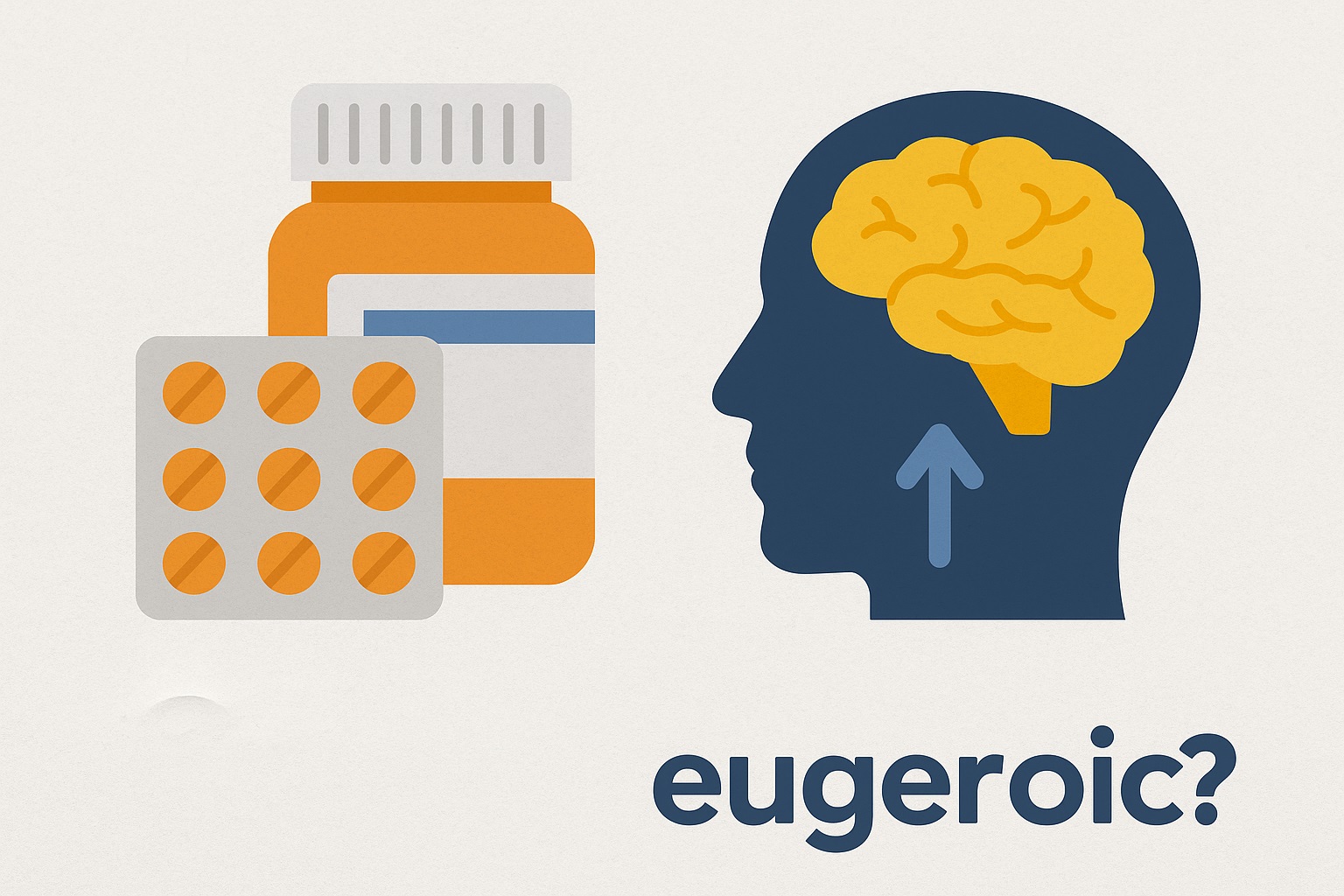The term “eugeroic” has gained traction in recent years as a label for wakefulness-promoting compounds that offer a more targeted and controlled stimulation of the brain—distinct from classic stimulants. In that context, many wonder: Is Adderall a eugeroic?
Let’s break it down by comparing Adderall’s pharmacology, effects, and classification with that of true eugeroics like modafinil and armodafinil.
What Is a Eugeroic?
The word “eugeroic” derives from Greek, meaning “good arousal.” It refers to a class of drugs that promote wakefulness and mental alertness without the traditional overstimulation, crash, or addictive properties of classic stimulants like amphetamines.
Core characteristics of eugeroics:
- Promote wakefulness via non-dopaminergic or indirect mechanisms
- Typically have low abuse potential
- Are non-euphoric
- Have long half-lives and smooth onset/offset
Examples of eugeroics:
- Modafinil (Provigil, Modavigil)
- Armodafinil (Nuvigil)
- Solriamfetol (Sunosi)
- Pitolisant (Wakix)
These drugs are often used to treat narcolepsy, sleep apnea, and shift work sleep disorder.
What Is Adderall?
Adderall is a central nervous system stimulant composed of mixed amphetamine salts. It works by directly boosting the levels of dopamine, norepinephrine, and serotonin, especially in the prefrontal cortex—the area responsible for attention and executive function.
It is prescribed primarily for:
- ADHD (Attention-Deficit/Hyperactivity Disorder)
- Narcolepsy
However, unlike eugeroics, Adderall has:
- A high abuse potential
- Strong euphoria at high doses
- Risk of tolerance, dependency, and withdrawal symptoms
- Potential cardiovascular effects (like increased heart rate and blood pressure)
Key Differences: Adderall vs. Eugeroics
| Feature | Eugeroics (e.g., Modafinil) | Adderall |
|---|---|---|
| Mechanism | Indirect (dopamine transporter inhibition, orexin modulation) | Direct dopamine/norepinephrine release |
| Onset | Gradual | Fast |
| Half-life | Long (12–15 hrs) | Moderate (9–14 hrs) |
| Euphoria | Minimal | Moderate to high (dose-dependent) |
| Abuse Potential | Low | High |
| Medical Uses | Sleep disorders | ADHD, narcolepsy |
| Schedule (U.S.) | Schedule IV | Schedule II (highly controlled) |
Why Adderall Is Not Considered a Eugeroic
Although Adderall does promote wakefulness, it is not classified as a eugeroic because:
- It is an amphetamine—a potent and traditional stimulant.
- It produces strong dopaminergic stimulation, leading to euphoric effects, especially at recreational doses.
- It carries a substantial risk of addiction and misuse.
- It affects mood, appetite, and cardiovascular function more aggressively than eugeroics.
In contrast, eugeroics are engineered to provide clean, sustained alertness with a lower risk of side effects, making them preferable for long-term management of sleep disorders or cognitive fatigue in clinical settings.
Can Adderall Be Used Similarly to Eugeroics?
Yes—in function, both Adderall and eugeroics can increase alertness and reduce fatigue. However, they should never be used interchangeably without medical supervision.
Some physicians may prescribe Adderall for narcolepsy if modafinil is ineffective or not tolerated. Still, the long-term side effects, especially in non-ADHD users, make eugeroics the more sustainable choice for wakefulness enhancement.
Finally
Adderall is not a eugeroic.
It is a powerful stimulant belonging to the amphetamine class. While it shares some effects with eugeroics, its mechanism, abuse potential, and pharmacological profile place it in a very different category.
If you’re considering a cognitive enhancer or wakefulness aid, the choice between Adderall and eugeroics should depend on medical necessity, safety, and long-term goals—ideally under professional guidance.
